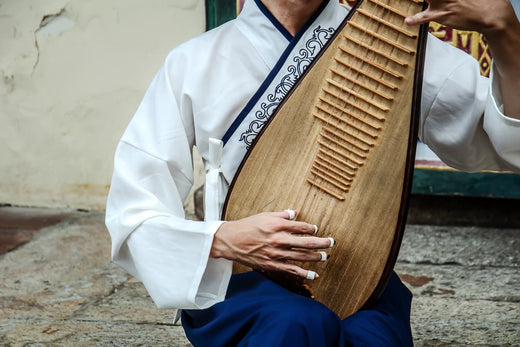The Pipa, a traditional Chinese stringed instrument with a history spanning over two millennia, has transcended cultural and geographical boundaries to become a beloved and influential presence in contemporary music. Its entrancing sound and unique timbre have found their way into a variety of musical genres, making the Pipa a bridge between ancient tradition and modern innovation. In this article, we embark on a melodic journey through the world of the Pipa in contemporary music, exploring how this ancient instrument continues to captivate audiences worldwide.
Resonating Across Genres
The versatility of the Pipa shines as it seamlessly integrates with a diverse array of musical styles:
World Fusion: Contemporary musicians often blend the Pipa's melodic qualities with Western instruments, creating mesmerizing world fusion compositions. This genre-crossing has given rise to captivating collaborations and a unique musical fusion.
Jazz Exploration: The Pipa's expressive capabilities have found a natural home in the improvisational world of jazz. Its distinctive timbre adds depth and texture to jazz ensembles, pushing the boundaries of what's possible in this genre.
Rock and Experimental Music: In the realm of rock and experimental music, the Pipa's electrifying presence has injected new dimensions into compositions. Its versatility in producing both melodic and percussive sounds allows it to complement the raw energy of rock.
Film Scores and Soundtracks: The Pipa's evocative sound has enriched film scores and soundtracks, creating a sonic tapestry that enhances cinematic storytelling. Its use in movies and documentaries adds authenticity and cultural depth to on-screen narratives.
Pipa Virtuosos of the Modern Era
Contemporary Pipa virtuosos have been at the forefront of this musical evolution, pushing the boundaries of what the instrument can achieve:
Wu Man: A trailblazing Pipa virtuoso, Wu Man has collaborated with musicians from diverse backgrounds, expanding the instrument's repertoire and pushing musical boundaries.
Liu Fang: Renowned for her mastery of both the Pipa and the Guzheng, Liu Fang has brought classical Chinese music to international audiences while exploring innovative contemporary compositions.
Yang Wei: Yang Wei is celebrated for his virtuosic Pipa performances, drawing from his rich traditional training to create innovative cross-genre music.
Challenges and Innovations
The incorporation of the Pipa into contemporary music has not been without its challenges. Musicians have had to adapt the instrument to modern contexts, leading to the development of electric Pipas and experimentation with alternative tunings and playing techniques.
Preserving Tradition while Embracing the Future
As the Pipa continues to evolve within contemporary music, it remains deeply rooted in Chinese tradition and culture. Musicians and enthusiasts alike recognize the instrument's role in preserving and celebrating the rich heritage of Chinese music, while also forging new connections with global audiences.
The Pipa's enduring presence in contemporary music is a testament to its timeless appeal and adaptability. As it resonates across genres and cultures, it serves as a powerful reminder that the beauty of traditional instruments can thrive and flourish in the modern world, enriching our musical landscape with its hauntingly beautiful melodies and centuries-old traditions.
Related Content:
Chinese Musical Instruments
Mastering the Erhu: Playing Techniques and Tips

